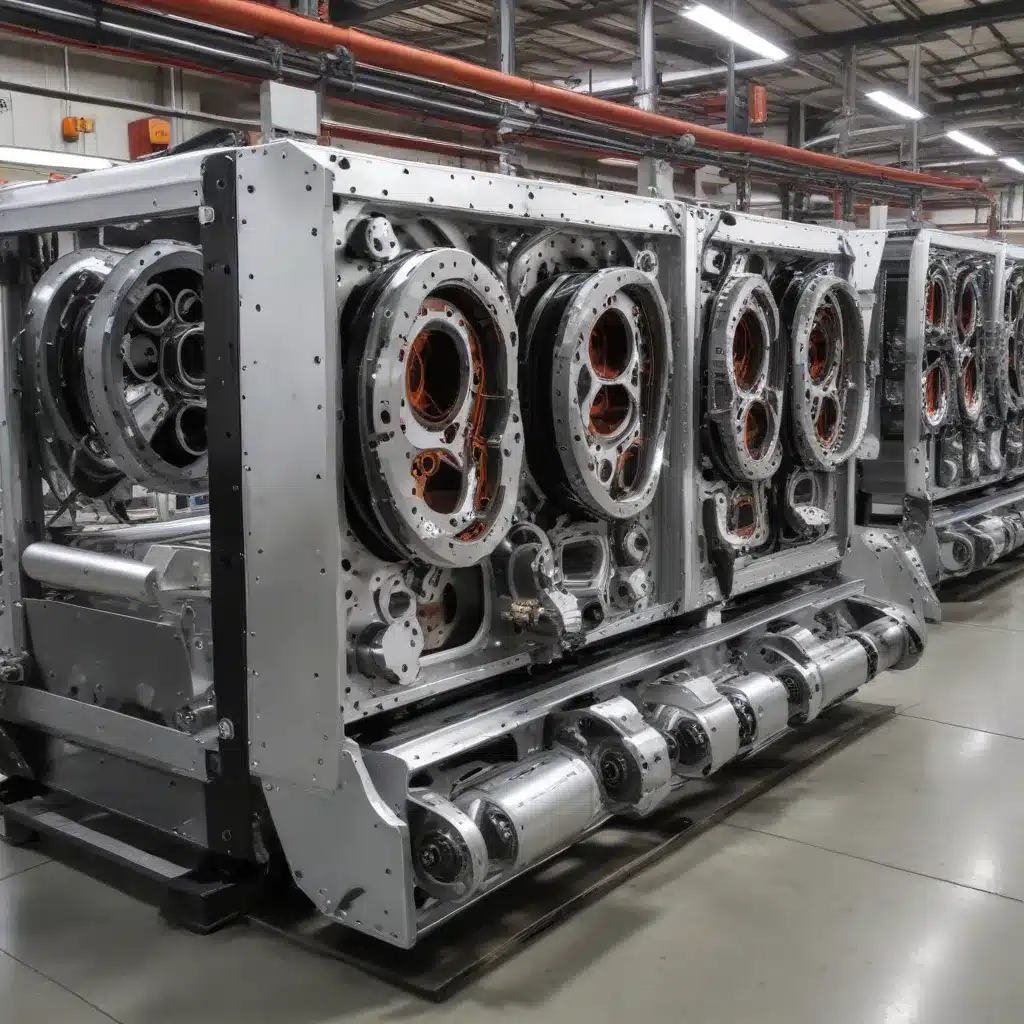
The Evolution of Air-Cooled Heat Exchanger Design and Production
In the ever-evolving world of thermal engineering, the fabrication of air-cooled heat exchangers has seen remarkable advancements, driven by the integration of robotic manufacturing technologies. As a seasoned expert in this field, I’m excited to share insights into how these innovative approaches are transforming the design, performance, and maintenance of air-cooled heat exchangers across various industries.
Traditionally, the manufacturing of air-cooled heat exchangers has relied heavily on manual labor, with skilled technicians meticulously assembling the intricate components. However, the introduction of robotic systems has revolutionized this process, ushering in a new era of precision, efficiency, and cost-effectiveness. By leveraging the speed, accuracy, and consistency of robotic fabrication, engineers can now design and produce heat exchangers with unprecedented levels of complexity and customization.
Robotic Welding and Assembly
One of the most significant innovations in air-cooled heat exchanger fabrication is the integration of robotic welding and assembly. Automated welding systems, equipped with advanced sensors and control algorithms, can execute complex welding patterns with unparalleled precision, ensuring the structural integrity and leak-proof performance of the heat exchanger components. This not only streamlines the assembly process but also reduces the risk of human error, resulting in a higher quality product.
Moreover, robotic assembly lines can orchestrate the seamless integration of various heat exchanger parts, from the intricate tube-and-fin configurations to the mounting brackets and headers. By automating these tasks, manufacturers can achieve a level of consistency and repeatability that would be challenging to replicate through manual labor. This standardization of the production process enables faster turnaround times, reduced labor costs, and enhanced quality control.
Additive Manufacturing and Customization
The advent of additive manufacturing, or 3D printing, has further revolutionized the fabrication of air-cooled heat exchangers. This technology allows for the creation of highly complex geometries and intricate designs that were previously unattainable through traditional manufacturing methods. By leveraging the capabilities of additive manufacturing, engineers can now design heat exchangers with optimized airflow patterns, enhanced heat transfer surfaces, and integrated features that improve overall performance and efficiency.
One of the key advantages of additive manufacturing is its ability to facilitate customization. Instead of relying on off-the-shelf components, heat exchanger designs can be tailored to specific application requirements, enabling optimal thermal management solutions for diverse industries. This level of customization, coupled with the precision of robotic assembly, opens up new possibilities for addressing unique thermal challenges and enhancing the overall effectiveness of air-cooled heat exchangers.
Predictive Maintenance and Reliability
Alongside the advancements in fabrication, the integration of robotic systems has also revolutionized the maintenance and reliability of air-cooled heat exchangers. By incorporating sensors and advanced monitoring systems, robotic-assisted maintenance can now detect and diagnose potential issues before they escalate, enabling proactive and targeted interventions.
This predictive maintenance approach not only extends the operational lifespan of heat exchangers but also reduces the frequency and duration of unplanned downtime. Robotic systems can perform routine inspections, identify wear patterns, and even execute certain repair tasks with precision, ensuring that air-cooled heat exchangers maintain their optimal performance throughout their service life.
Industry Applications and Case Studies
The impact of robotic manufacturing on air-cooled heat exchanger fabrication can be seen across a wide range of industries, from power generation and petrochemical processing to HVAC systems and automotive manufacturing.
In the power generation sector, for example, the use of robotic welding has enabled the production of larger, more complex heat exchangers that can handle the demanding requirements of modern power plants. These heat exchangers, designed and fabricated with robotic precision, have demonstrated improved thermal efficiency, reduced maintenance needs, and enhanced reliability, ultimately contributing to the overall performance and sustainability of the power generation infrastructure.
Similarly, in the petrochemical industry, air-cooled heat exchangers play a crucial role in various process cooling and heating applications. The integration of robotic manufacturing has allowed for the creation of customized heat exchanger designs that can withstand the harsh operating conditions, corrosive environments, and stringent safety requirements of this sector. By leveraging the capabilities of robotic fabrication, manufacturers can ensure the long-term durability and performance of these critical components, minimizing the risk of failures and improving the overall process efficiency.
Embracing the Future of Heat Exchanger Fabrication
As the industry continues to evolve, the integration of robotic manufacturing in the fabrication of air-cooled heat exchangers is poised to become increasingly prevalent. By harnessing the precision, speed, and versatility of robotic systems, engineers and manufacturers can push the boundaries of thermal management solutions, optimizing the design, performance, and reliability of these critical components.
The Air Cooled Heat Exchangers blog is dedicated to providing our readers with the latest insights and advancements in this rapidly changing field. We invite you to explore our resources and engage with our community of thermal engineering experts to stay ahead of the curve and capitalize on the transformative potential of robotic manufacturing in the air-cooled heat exchanger industry.
Conclusion
The integration of robotic manufacturing in the fabrication of air-cooled heat exchangers has ushered in a new era of precision, efficiency, and customization. From automated welding and assembly to the integration of additive manufacturing techniques, these advancements have revolutionized the design, performance, and maintenance of these critical thermal management components.
By embracing the capabilities of robotic systems, manufacturers can now produce air-cooled heat exchangers that are tailored to the specific needs of various industries, offering enhanced thermal performance, improved reliability, and reduced maintenance requirements. As the industry continues to evolve, the synergetic relationship between robotic fabrication and air-cooled heat exchanger design will undoubtedly pave the way for even more innovative and sustainable thermal management solutions.

